
Postal History
The postal history of Sudan is a rich and varied field for the collector and specialist alike. The following is a very brief outline of the main areas of study. It is intended that this area of the website will be developed in the future.
Early Mail from Explorers, Merchants & Administrators
Covers are know from the mid 1840’s when explorers and merchants travelled up the Nile towards Khartoum. Items of mail to and from Italian merchants, minor explorers (John Errington) and John Petherick (the British Government’s representative in Khartoum) were privately carried and bore no Sudanese postal markings.
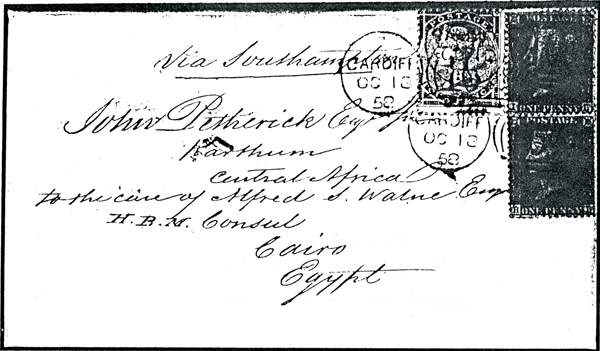
In the 1870’s and 1880’s mail to and from General Gordon, Baron Rudolph von Slatin, James Grant, Carl Giegler and Romolo Gessi was sent via the Egyptian postal system operating through territorial offices in the Sudan.
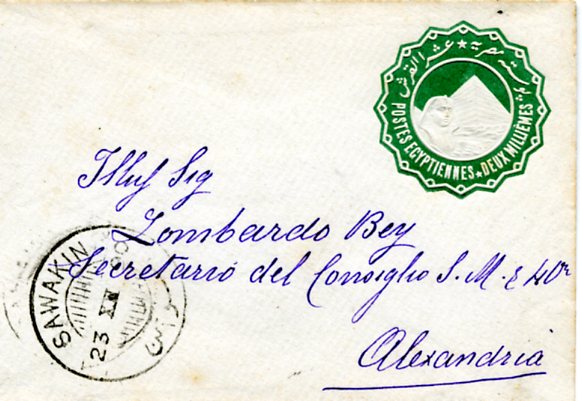
Suakin Egyptian stamps used in Sudan
The first post office opened at the port of Suakin on the Red Sea in 1867. During the next six years other followed at Wadi Halfa, Khartoum, Berber, Dongola, Kassala and Massawa. The postal system was administered by Egypt and Egyptian stamps were used until Sudan issued its own stamps in 1897.
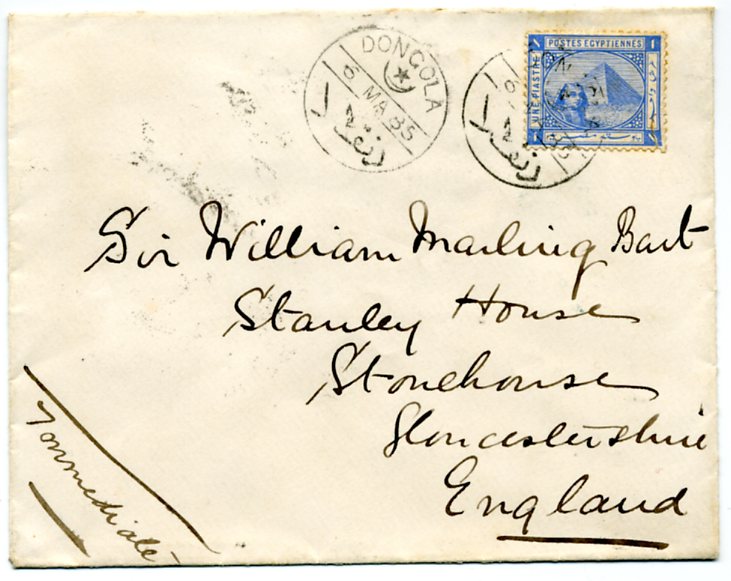
Campaign Mail 1883 – 1899
The period 1883-1899 saw a huge increase in the volume of mail sent and received, mostly by soldiers serving in various campaigns. Officers’ and soldiers’ rate covers (many with original letter) exist from the Nile Expedition to relieve Khartoum and from operations in the Eastern Sudan in 1884-85. The former includes the Canadian Voyageur contingent and the latter Indian troops and the Australian Contingent.
Indian troops again served in Sudan during 1896 with mail sent at the soldiers’ concessionary rate and extensive correspondences exist from the Dongola Expedition of the same year.
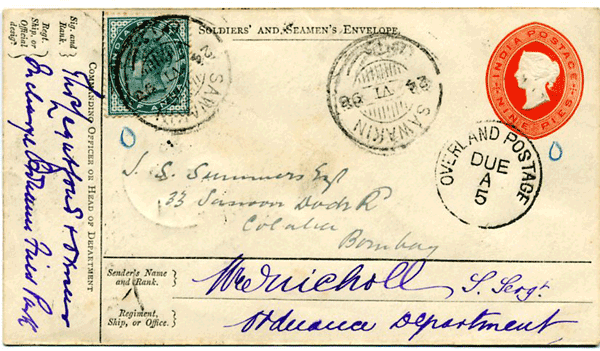
Mail from the Nile Expedition of 1897/98 provides the collector with early TPO covers posted on railways and steamers, frankings of provisional issues and ‘camel’ stamps from a range of post offices, postage due mail, original correspondences, letters signed by Kitchener and Haig, ‘wreck’ items and covers to unusual destinations.
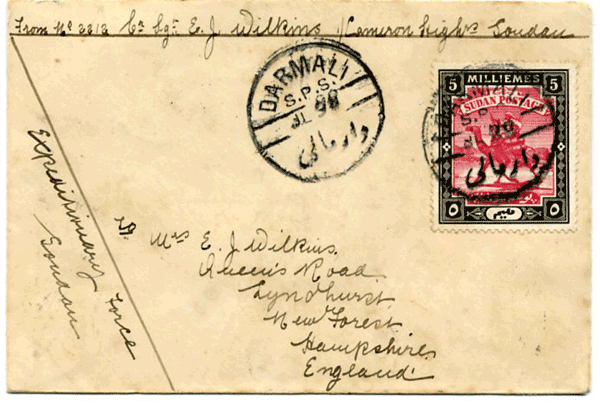
Campaign Mail from Border Areas and the Lado Enclave
Mail from Uganda, the Belgian Congo and French Congo was routed via the Nile and Khartoum during the early part of the 20th century. Such items often have Sudanese stamps affixed to pay the additional postage through the Sudan. An area of southern Sudan, the Lado Enclave, was leased to King Leopold of the Belgians to facilitate the transport of produce from the Congo via the Nile route to Europe and other destinations.
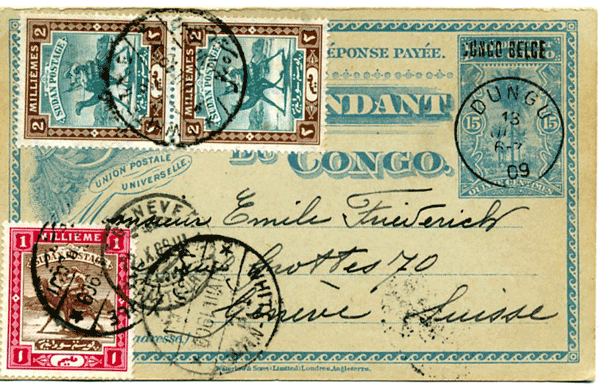
Civil Censorship of Mail
Civil Censorship of mail was imposed from 1914 – 1918 on mail leaving and in some instances, entering the Sudan. Mail from the armed forces stationed in the Sudan was censored by use of a triangular civilian censor mark. Egyptian and Sudanese censor labels and straight line handstamps were also used.
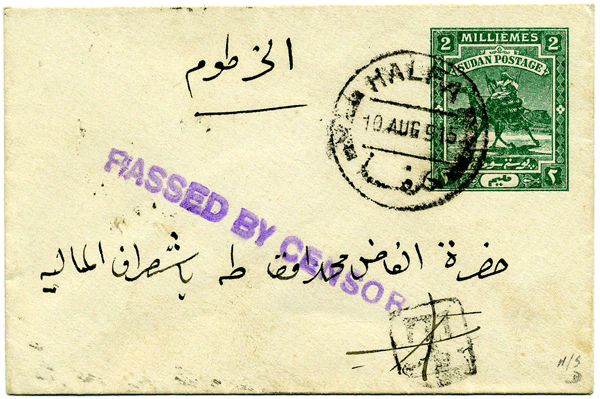
Censorship was re-imposed for a short period in 1924 following disaffection by Egyptian troops which resulted in them being sent home to Egypt. At this time triangular censor marks were used on mail.
During the 1939-1945 war civilian mail was subject to a system of censorship which used a number of different types of label in conjunction with numbered triangular handstamps although in the early part of the war mail only a handstamp was applied to censored mail.
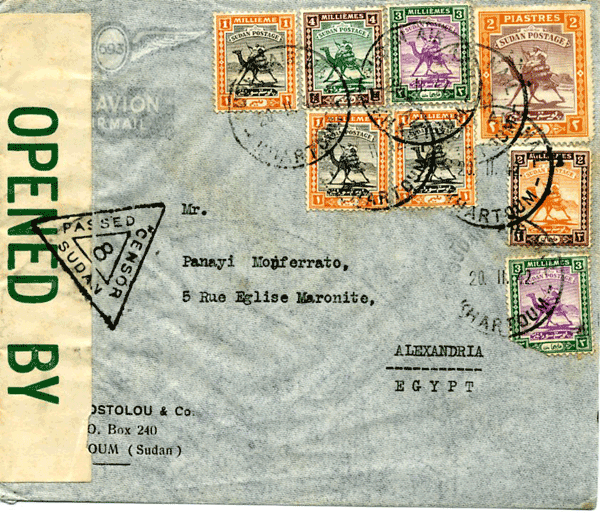
WW2 Military Mail
This vast area of collecting has gained in popularity in recent years. It includes British Field Post Offices, Egyptian Military Post Offices, East African Post Offices, Indian Field post Offices, the South African Field Post Office and Sudan Defence Force Post Offices.
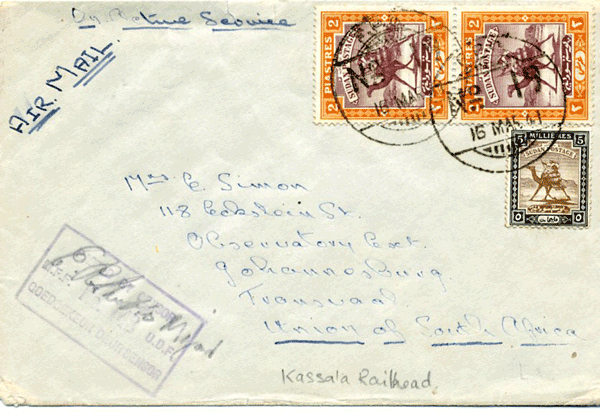
Wings over the Sudan – the coming of Airmail
In 1914 Marc Pourpe, a French aviator flew from Cairo to Khartoum and back. He was followed in 1925 by Sir Alan Cobham’s pioneering flight from England to South Africa. Cobham was sponsored by Flight magazine and posted cards at stops throughout his trip including Sudan. Further flights were undertaken by Capt. W.E., Gladstone in 1927 to test the feasibility of a permanent airmail route. Imperial Airways established a permanent route to East Africa in 1931 which was extended to the Cape the following year. Pioneer and later airmails are widely collected.
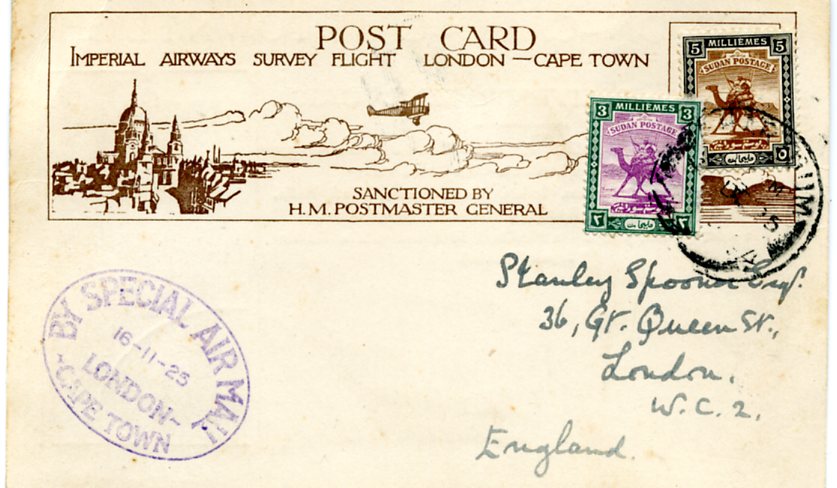
The Travelling Post Offices
In a country as large as the Sudan - nearly a million square miles, with a population of 28,000,000 it is uneconomic to provide large numbers of ordinary post offices although at least 800 have now been recorded. T.P.O’s form an integral part of the postal services and with few exceptions they are true travelling post offices halting at intermediate stations to provide a range of postal services. River T.P.O’s worked from a barge lashed to the side of the flat bottomed Nile steamers which were gradually replaced by the less picturesque diesel tug.
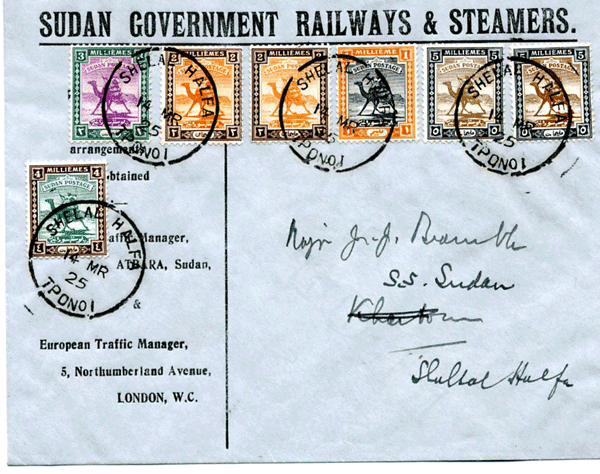
Precise dates of early T.P.O’s are difficult to establish but it is clear a link existed on the frontier with Egypt at the time of the reconquest of 1896-98. More than 43 different T.P.O’s have been recorded.